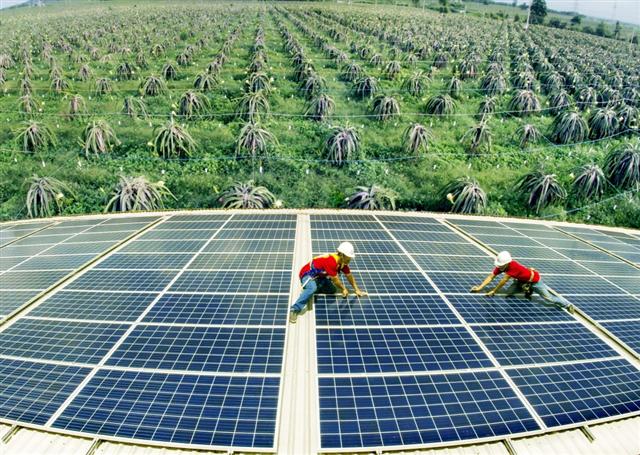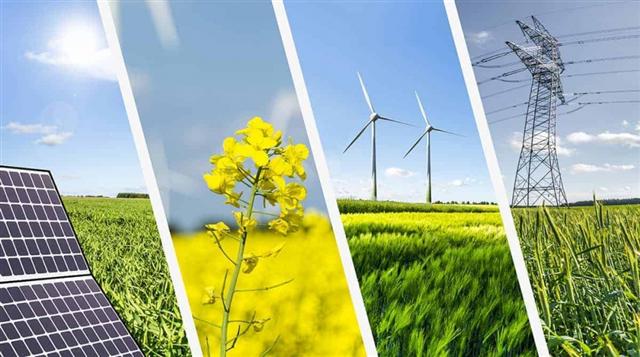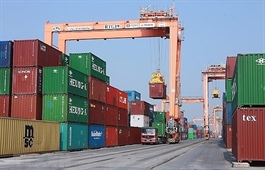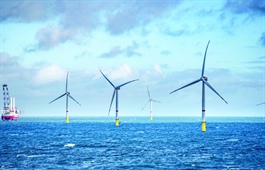Surge expected in renewable energy as economy recovers
Surge expected in renewable energy as economy recovers
Electricity consumption is forecast to resume its growth this year as the economy recovers from the Covid-19 pandemic, with solar and wind power setting new capacity records facilitated by attractive investment policies and price incentives. The forecast is in tune with the surge in installed wind and solar capacity over the past five years - from almost zero to 10 percent - driven by the country’s explosive growth.
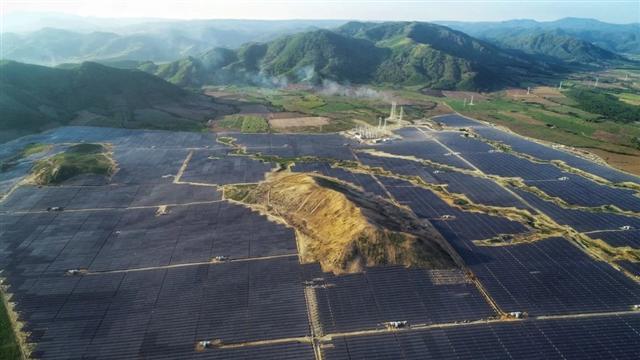
Incentive policies have attracted a large number of investors in renewable energy
|
Pricing stability
This year is expected to be a turning point for the development of rooftop solar power in Vietnam. The National Power Development Plan VIII for the 2021-2030 period, being developed by the Ministry of Industry and Trade (MoIT) within a new legal and policy framework, is expected to be approved in early 2021. Power Master Plan VII issued in March 2016 forecast solar energy development capacity would reach 4,000 MWp in 2025 and 12,000 MWp by 2030.
According to Vietnam Electricity (EVN), Vietnam’s largest power company, as of November 2020, the country had 101,996 installed solar energy power projects with a total capacity of 9,583 MWp. In particular, according to the Southern Power Corporation (EVNSPC), 43,609 customers installed rooftop solar power in 2020 with a capacity of about 5,409 MWp, an increase of 26 times compared to 2019. The total payable to customers selling solar power was VND721 billion. The Ho Chi Minh City Power Corporation reported 8,762 grid-connected solar power projects in the city; the total amount paid to customers selling electricity back to EVN was VND119.66 billion.
At the same time, 2021 will also be the first year of stable prices of electricity purchase by the national grid. Specifically, EVN has said that the buying price of rooftop solar power in 2021 is about VND2,162/kWh (equivalent to 9.35 cents/kWh) for projects operating from June 1, 2017 to June 30, 2019 and VND1,938/kWh (equivalent to 8.38 cents/kWh) for projects operating from July 1, 2019 to December 31, 2020.
This price is converted at the exchange rate of VND to USD (US$1 equals VND23,131), for projects commercially operated before December 31, 2020. The MoIT is currently studying the price policy for projects launched this year and beyond.
EVN is forecasting that electricity demand will recover and grow at a rate of 8-10 percent in 2021. According to the National Load Dispatch Center, the total power output in 2021 will reach 267.9 billion kWh, up 7.15 percent compared to 2020. The increased demand will create more opportunities for electricity producers, especially renewable energy enterprises.
|
Investment attraction policy
EVN will continue to offer preferential mechanisms to renewable energy producers in 2021 according to National Power Development Plan VIII which includes a focus on green energy sources. The renewable energy segment will enjoy advantageous loan capital from foreign banks at low interest rates, stable cash flow and revenue, making solar and wind energy a profitable undertaking. Solar and wind power capacity will increase this year to as much as 20,198 MW.
Bidding for power projects will start in 2021, and only companies investing in solar power at low costs, and locating their production near transmission lines will be eligible to compete and enjoy the incentives of the energy industry mechanism.
|
According to Nguyen Hoang Dung, Vice President of the Binh Thuan Wind and Solar Power Association, the forecast rise in demand, especially by the industrial production sector, will attract investment in stable, lucrative power projects. The chair of the Ninh Thuan Provincial People’s Committee Tran Quoc Nam emphasized that Resolution 55-NQ/TW on Vietnam’s strategic orientations for national energy development has opened up new opportunities for energy development, especially renewable, clean energy. In particular, it also creates an incentive mechanism to attract all economic sectors to invest in energy development.
However, in order to develop clean energy, ministries continue to study mechanisms, policies and regulations on the development of renewable energy power projects in the form of electricity price competition. In addition, since power transmission grids play a particularly important role in the development of energy projects, the government should adopt a clear mechanism to attract investment for power transmission projects to ensure synchronous investment in both the transmission grid system and power plant projects.


